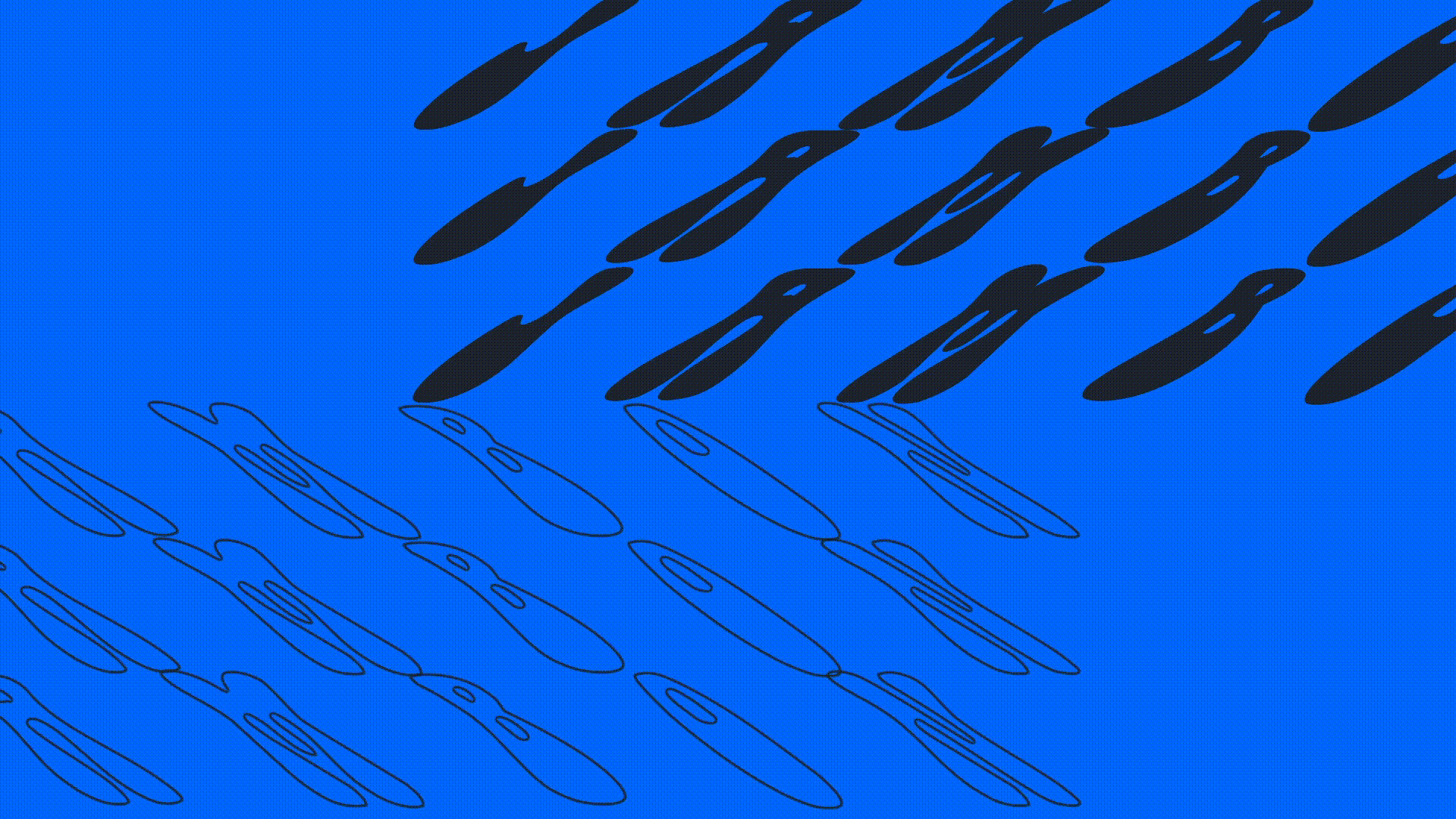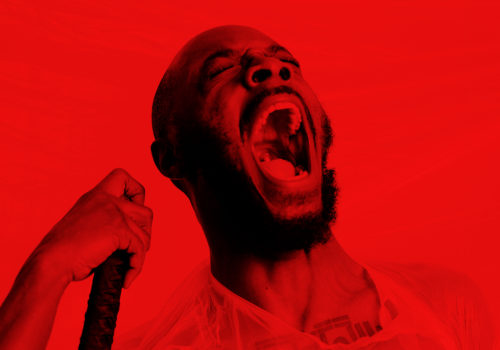Mysteries of the Deli: The Jambon
Words: Caitriona Devery
Animations: Cian Ryan
Who invented the jambon? Food is so ubiquitous that the idea of questioning where a particular dish came from seems an impossible task. We assume that dishes have been around forever. But someone must have made the first one. At CHAR, we dedicate ourselves to pursuing the food stories that matter. In this feature, our emissary Caitriona Devery takes on the herculean task of unearthing the truth behind the mystery of the jambon.
Jambons are for me associated with Irish hip hop legends Scary Eire. The unlikely connection was made one lazy summer in the early 2000s when I moved back to Tullamore after college. Two members of Scary Éire hail from Tullamore and the mythology of the group permeated the town. I was hanging out with someone who had been a breakdancer for Scary Éire when they supported U2 at the RDS. Offaly was a hotbed of B boys back in the day. He introduced me to Dole Q, and I spent that summer dole queuing myself and living off whatever the 2002 equivalent of £57 a week was. Our Thursday routine often involved going to Centra after our dole pickup for savoury snacks. I usually went for a sausage roll. But one day my eyes landed on a different kind of pastry. Soundtracked by Scary Eire, my love of jambons was born.
Jambons are one part of the Holy Trinity of Irish deli hot counter foods along with the Breakfast and Chicken Fillet Rolls.
In case you have never set eyes on one, a jambon is a buttery, flaky, Danish-pastry shaped square filled with cheesy sauce with chunks of ham.
When they are done right (i.e. not dried out or overcooked) the pastry is flaky and buttery, the bechamel sauce is thick and substantially creamy, dotted with bites of smoky ham. The cheese is deeply savoury, with a richer flavour than you might expect from a fast food item. Timing is everything with a jambon. A general rule of thumb is never to eat a jambon after 2pm. Abandoned for too long on the hot counter they become dry and hard, with aggressively pointy pastry corners and a dessicated puddle of sauce. I prefer a little wobble in my bechamel. They are the perfect hangover food. Since the early 2000s I’ve been the biggest jambon fan but in the past couple of years I started to ask the big question: where did jambons come from?

The word jambon means ham in French. The attainment of fast food status epitomised by the creation of a vegan jambon must be confusing for visiting Frenchies. The French name was the basis for my initial hypothesis that Irish bakery company Cuisine de France invented the jambon. Cuisine de France may be a bit naff now, but down the country in the nineties, it was the epitome of bread based sophistication, as the company brought their version of French-style bread to a mass audience. Their mission then is summed up on their website “In the 1980s, Ireland was all strikes and austerity and plain sliced pan. We felt the Irish people deserved more. So we set up Cuisine de France.” Their products are par-baked, frozen and then cooked to completion in store. Started in 1989, Cuisine de France set the scene for the ubiquity of the in-store bakery and ultimately the hot food counter, now a stalwart of everyday Irish food culture. They are now part of giant global food conglomerate Arytza.
Máirtín Mac Con Iomaire, lecturer in food at TU Dublin, put me in touch with Darren Harris, pastry expert at the university and a former employee of Cuisine de France. Darren filled me in on the broader hot food history, explaining how ‘Food to Go’ took off in Ireland in the late 1990s. As people became busier and had more disposable income, convenience foods like hot pastries, chicken fillet and breakfast rolls became more popular. Jambons, then, are a modern pastry for modern times; and I would argue the only redeeming food product to come out of the Celtic Tiger period. Before that, the only thing you could get to eat outside homes and restaurants was cheese and onion Tayto. But Darren didn’t think Cuisine de France made the first jambon. He said however, that generally these kinds of pastries are made on production lines in baking factories. One baker might make jambons for a range of different brands so it could be difficult to find the actual manufacturer. He suggested I try a company called Golden Bake. So I filled in an online contact form on the Golden Bake website and a few days later I got a call.
“You wanted to talk about jambons?,” it was Síle from Golden Bake, an Irish company that specialises in puff pastry.
SIle is as enthusiastic about jambons as I am, possibly more. She even married the man who introduced her to her first jambon. She estimates that Golden Bake make 80% of the jambons in the country which they sell via wholesalers. They are experts in ‘laminated pastry’ which is a process to create thin layers of dough separated by butter. How these layers separate when baked is critical to a good jambon. Golden Bake use Emmental and Irish ham and the pastry to filling ratio is very important. You can now also buy their jambons frozen, to cook at home.
I still hadn’t got the bottom of who invented my favourite breakfast savoury so I contacted Wholesalers Musgraves who passed me onto another bakery multinational, Délifrance. They are a ‘leading bakery solution’ company who supply industrial bakery products around the world. Délifrance stake claim to having invented the jambon in 1997, originally called a ‘ham and cheese basket’.
Irish people ate six million of their jambons in 2018 and I am confident that I made a significant contribution to that number. I dug around for more information about how it came to be, but the deeper origin story of the Irish jambon is a mystery, lost down the back of dusty filing cabinets in a pastry factory somewhere. The prototypes, the concept drawings, are not to be found. The identity of the industrial bakery genius who dreamed up the first jambon remains unknown.
So that’s the OJ, the Original Jambon, a humble industrial product beloved by many. I learned when they were born and how they are made now, but I never got to meet the maker. Yet perhaps the most interesting part of the jambon story is the second chapter, how the jambon has been taken as a template and experimented with. It’s a nice example of food evolution, of how recipes and products are born to meet changing social patterns, and how everyday foods can become something altogether more sophisticated. Artisan jambons are Ireland’s answer to the Cronut.

Graham Herterich aka The Cupcake Bloke started making fancy jambons in the last couple of years, selling them from his bakery in Rialto. He told me he has fond memories of picking up “a bag of jambons” from the garage in Waterford when he was studying Culinary Arts in WIT, saying “they are a real nostalgic product for many people”. He makes jambons on Saturdays and there is often a queue of people waiting for them before the shop opens. Graham told me he likes to ‘modernise’ nostalgic foods, remaking them with quality Irish ingredients. For his regular jambon he uses smoked bacon, Irish cheeses like Durrus Óg or 15 Fields from Sheridan’s, and a butter puff. He made one with bacon, cabbage with parsley sauce for St Patrick’s Day. Other incarnations include barbecue pulled pork, bechamel sauce with crispy onion, and blue cheese, fig, prosciutto with honey and walnut. You won’t see these in Centra.
I also spoke to Jess Murphy of Kai in Galway, who is a longstanding jambon champion. They sometimes feature jambons on their menu. She is on the same page as Graham, saying that it’s fun to remake industrial type products with craft ingredients. They do a classic cheese and ham which she compares to mac and cheese in a puff pastry. They also venture into more unusual territory.
“We do one with nettles, bechamel with blanched nettles, coffee bacon, and Durrus,” she told me.
“Durrus is the ultimate cheese for jambons because it has an amazing melting structure, but we’ve made them with Coolea or Knockanore or smoked Gubbeen. And we had a deluxe jambon at Christmas, cranberry ham and camembert”.
But just like the rest of us Jess is partial to a traditional jambon every now and then. “I have on very weak occasions – given in – and you do feel dirty afterwards. The guilt of the jambon”. It’s true, jambons are junky and we agree they are not for everyone.
Jess muses, “I wonder if Catherine Cleary ever ate a jambon?”. She texts the (then) Irish Times food critic that instant, and gets the reply, ‘No, not that I’m aware of,’ which is clearly a hard no, because if you ate a jambon, you’d remember, right?
Jess and I speculate about how the jambon came about, in those heady days of the late 1990s hot food counter world.
“Somebody must have invented it”, Jess says. “It’s kind of like a French take on the croque madame. I’d say it’s a take on a savoury Danish. Somebody must have come across something on holiday. Let’s guess, some kind of Alpine region, maybe near Switzerland? Somewhere with that black forest ham, cheese like Comte, Vacherin”.
“Maybe someone who went on a skiing holidays in 1995?” I respond. Although I always thought jambons have a kind of Spanish flavour.
Jess says, “Hmm, maybe if you unpeeled a croquette and put the innards in a puff pastry. But it doesn’t make sense because Spain doesn’t really have that pastry. Maybe Portugal – they have tart pastry. Definitely some country that laminates pastry. It must be somebody’s cultural dish that we bastardised”.
Perhaps we’ll never know the mastermind behind the jambon, or whose culture was appropriated. As Neil Armstrong said, “Mystery creates wonder and wonder is the basis of man’s desire to understand”. So let me take this opportunity to say: Thank you, Mr or Mrs Jambon, whoever you are.
If you have a suggestion for a culinary deep-dive please send an email to our resident food-sleuth. She can be found at caitriona@districtmagazine.ie





